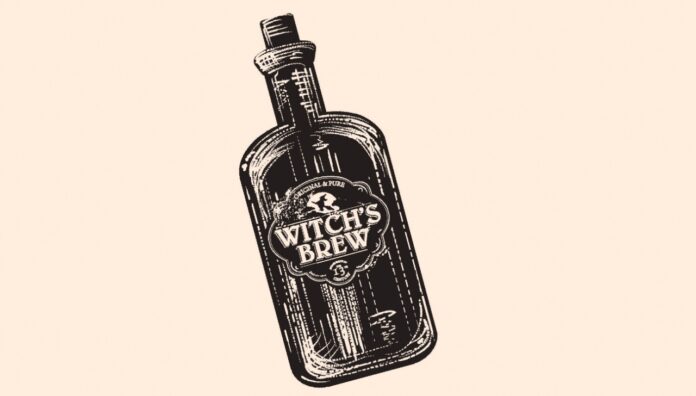When it comes to belladonna, the eyes have it. Pity it’s highly toxic…
During the Italian Renaissance of the 14–16th centuries, belladonna was a popular cosmetic product. Well-dressed women used juice from the berries of the plant to dilate their pupils, resulting in a fashionably seductive look. Hence the name belladonna, Italian for ‘beautiful woman’.1–6
But millennia before it helped make a fashion statement, belladonna was used as an anaesthetic, pain reliever and remedy for assorted ailments, not to mention as a hallucinogenic component of rituals. It was also used as an oral poison and to tip arrows.1,5,7
Deadly nightshade, murderer’s berries, sorcerer’s berries and even devil’s berries — as belladonna’s alternative names reveal, its not so ‘bella’ side was well known. The plant was associated with broom-riding witches and poison potions.3,4,8
Shakespeare described belladonna’s impact when referring to Juliet’s attempt to feign death to avoid marriage with Paris and escape with Romeo1,4,8:
Her blood is settled, and her joints are stiff: Life and these lips have long been separated; Death lies on her like an untimely frost upon the sweetest flower of all the field.
What is belladonna?
Atropa belladonna is an ornamental plant of the Solanaceae family. It is native to Europe, North Africa and Western Asia. Growing to a height of 150 centimetres in barren stony soil, belladonna has oval leaves, green-purple flowers and sweet black berries.3-5,9,10,12
The herbaceous perennial is highly poisonous, especially the leaves and fruit. They contain atropine, scopolamine and hyoscyamine alkaloids. Consuming the alkaloids can be deadly. Just touching the leaves may cause a rash.1,6-9,10
How it works
Belladonna’s alkaloids affect the body’s nervous system. Specifically, they block the neurotransmitter acetylcholine from binding to the central nervous system and to parasympathetic postganglionic muscarinic receptors.6,7,9-11
Toxic effects can be wide-ranging, as evidenced by the case of an 11-year-old Moroccan girl treated for belladonna toxicity by the intensive care team at the Mother and Child Hospital in Fes.5,7,9
‘She was given Atropa belladonna by an herbalist in a therapeutic interest,’ they reported. Her symptoms included dry mouth, confusion, incoherent speech, and an inability to recognise family members. She also presented with uncontrollable vomiting, visual disturbances, and hearing and visual hallucinations.7
Belladonna can also cause changes to saliva, sweat, pupil size, urination and digestive functions. It can also cause seizures, headaches and increased heart rate and blood pressure.10,11
Medical uses
Today, medicines containing alkaloids found in belladonna, such as atropine, are used in areas such as emergency medicine and anaesthesia.13
Interestingly, atropine is used as an antidote of organophosphate poisoning by reversing its muscarinic effects (such as vomiting, diarrhoea, bradycardia, miosis, sweating and salivation).13
Proving the eyes still have it, atropine is also indicated for use in optometry for conditions like uveitis, myopia progression, amblyopia and sometimes for eye exams.13 Overseas, transdermal scopolamine is sometimes used to help treat nausea and vomiting-related conditions.14
References
- Fletcher J. Uses and risks of belladonna. Medical News Today. 2017. At: https://www.medicalnewstoday.com/articles/318180
- Meriney SD, Fanselow EE. Acetylcholine in Synaptic Transmission. Academic Press 2019:345–67. At: https://www.sciencedirect.com/topics/neuroscience/atropa-belladonna
- Passos ID, Mironidou-Tzouveleki M. Hallucinogenic Plants in the Mediterranean Countries in Neuropathology of Drug Addictions and Substance Misuse Vol 2. Academic Press. 2016:761–72. At: https://www.sciencedirect.com/science/article/abs/pii/B9780128002124000716
- Morris SM. Belladonna: remedy with a dark past. Healthline. 2017. At: https://www.healthline.com/health/belladonna-dark-past
- Annisadmin. Atropa belladonna: deadly nightshade. Penny Dreadful Archives. 2016. At: https://pennydreadfularchives.wordpress.com/2016/05/31/atropa-belladonna-deadly-nightshade/
- DrugBank. Belladonna. 2017. At: https://go.drugbank.com/drugs/DB13913
- Berdai MA, Labib S, Chetouani K, et al. Atropa belladonna intoxication: a case report. Pan Afr Med J 2012;11:72. Epub 2012 Apr 17. At: https://www.ncbi.nlm.nih.gov/pmc/articles/PMC3361210/
- Mann J. Belladonna, broomsticks and brain chemistry. Education in Chemistry. 2008. At: https://edu.rsc.org/feature/belladonna-broomsticks-and-brain-chemistry/2020099.article
- Karagoz I, Bilgi M, Boduc E, et al. Atropa belladonna and associated anticholinergic toxic syndrome: a case report. Bali Med J 2017;3(3):S90–S92. At: https://balimedicaljournal.org/index.php/bmj/article/view/673/pdf_330
- National Library of Medicine. MedlinePlus. Belladonna. 2022. At: https://medlineplus.gov/druginfo/natural/531.html
- Banasik M, Stedeford T. Plants, Poisonous (Humans). Encyclopedia of Toxicology (Third Edition). Academic Press. 2014. p970–78. At: https://www.sciencedirect.com/science/article/abs/pii/B9780123864543000488
- Jim’s Mowing. The Essential List of Poisonous Plants in Australia. At: https://www.jimsmowing.com.au/2021/01/the-essential-list-of-poisonous-plants-in-australia/#:~:text=For%20the%20formidable%20deadly%20nightshade,has%20become%20a%20fruitful%20one
- Rossi S, ed. Australian medicines handbook. 2023. At: https://amhonline.amh.net.au
- Pruthi S, ed. Mayo clinic. 2023. Scopolamine (Transdermal Route). At: www.mayoclinic.org/drugs-supplements/scopolamine-transdermal-route/side-effects/drg-20072848?p=1#:~:text=Scopolamine%20transdermal%20patch%20is%20used,group%20of%20medicines%20called%20anticholinergics



 Dr Peter Tenni[/caption]
Dr Peter Tenni[/caption]
 How should we deprescribe gabapentinoids, according to the Maudsley Deprescribing Guidelines[/caption]
How should we deprescribe gabapentinoids, according to the Maudsley Deprescribing Guidelines[/caption]



 Pharmacists have always prescribed, but they have the potential to prescribe much more
Pharmacists have always prescribed, but they have the potential to prescribe much more







